
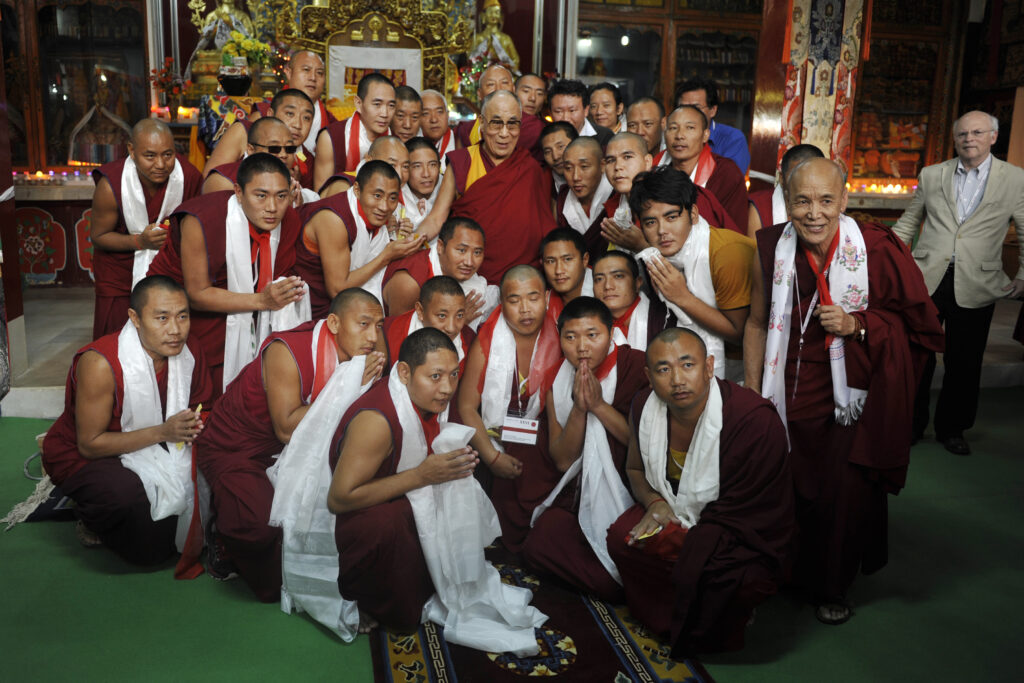
Bridging Tradition—The Dalai Lama’s Vision for Science, Spirituality, and the Future
His Holiness the Great 14th Dalai Lama’s fascination with science and technology began in childhood. As a young boy in Lhasa, he would dismantle and reassemble toys, clocks, radios, and even the Thirteenth Dalai Lama’s cars—driven by an innate curiosity about how things worked. He repaired movie projectors and grasped the basics of electricity long before receiving any formal instruction, foreshadowing a lifelong engagement with scientific inquiry.
In exile, this early curiosity matured into a profound and purposeful exploration of the relationship between ancient Buddhist wisdom and modern science. While Buddhism offers deep insights into the nature of the mind, consciousness, and emotions, modern science explores the intricacies of the material world. His Holiness believes that true understanding emerges through dialogue and mutual respect between these two domains.
Over the past four decades, the Dalai Lama has become a global catalyst for meaningful exchanges between Buddhist monastics and scientists. He has engaged with experts in neuroscience, psychology, and quantum physics, exploring topics such as the effects of meditation on the brain, the nature of consciousness, and the intersection of ethics and science. These conversations have advanced both contemplative science and modern research.
One key outcome of this vision was the founding of the Mind & Life Institute in 1987, which created an enduring platform for collaboration between scientists and Buddhist scholars. Since then, the institute has hosted more than 30 formal dialogues, bridging laboratory research and meditative practice.
Another major initiative—the Emory-Tibet Science Initiative (ETSI), launched in 1998—integrated biology, physics, neuroscience, and cosmology into the curricula of Tibetan monastic institutions. Science textbooks were translated into Tibetan, and monks and nuns were trained as science educators. Today, many monastics engage in scientific dialogue as part of their scholarly and spiritual training.







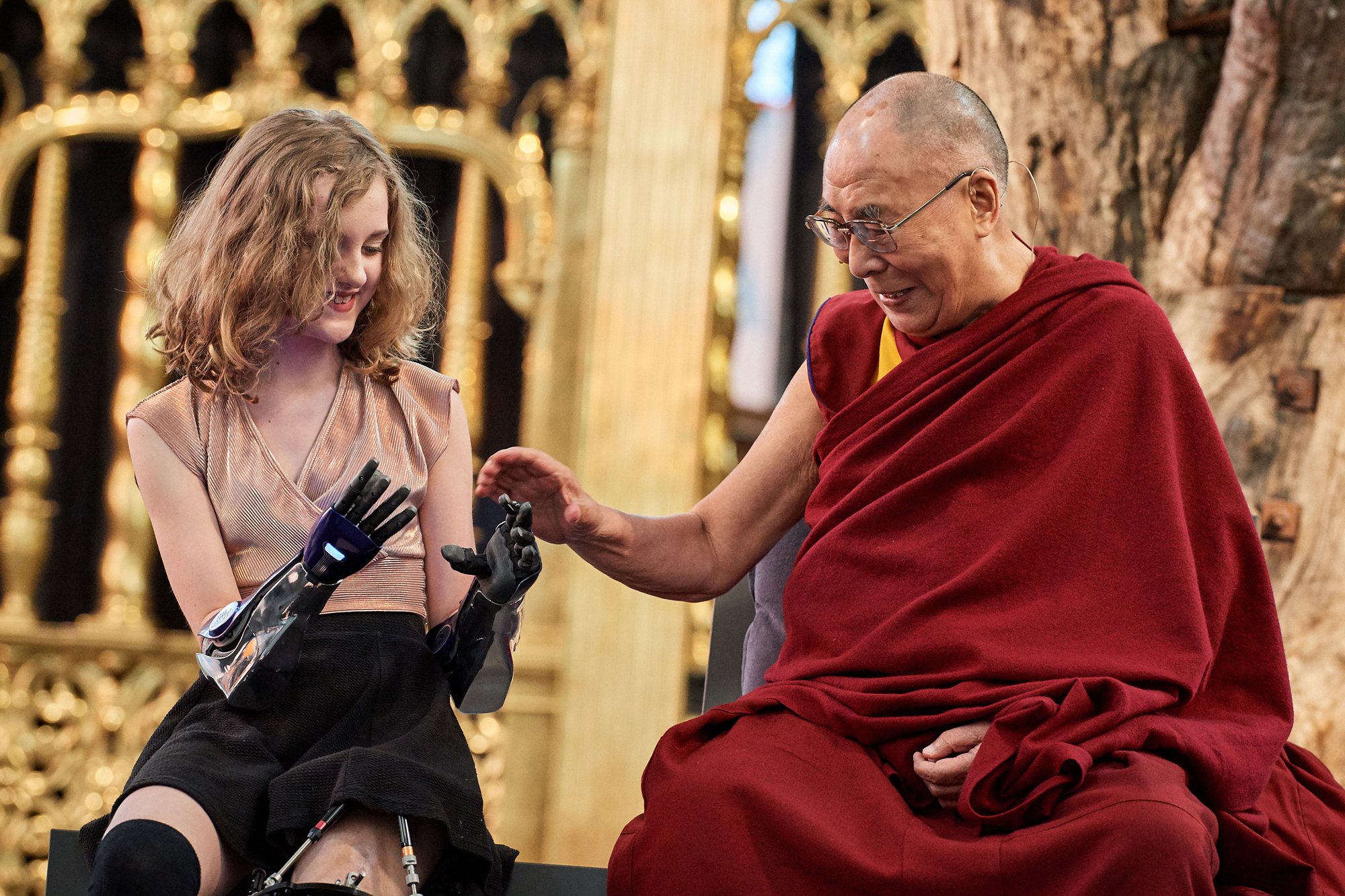
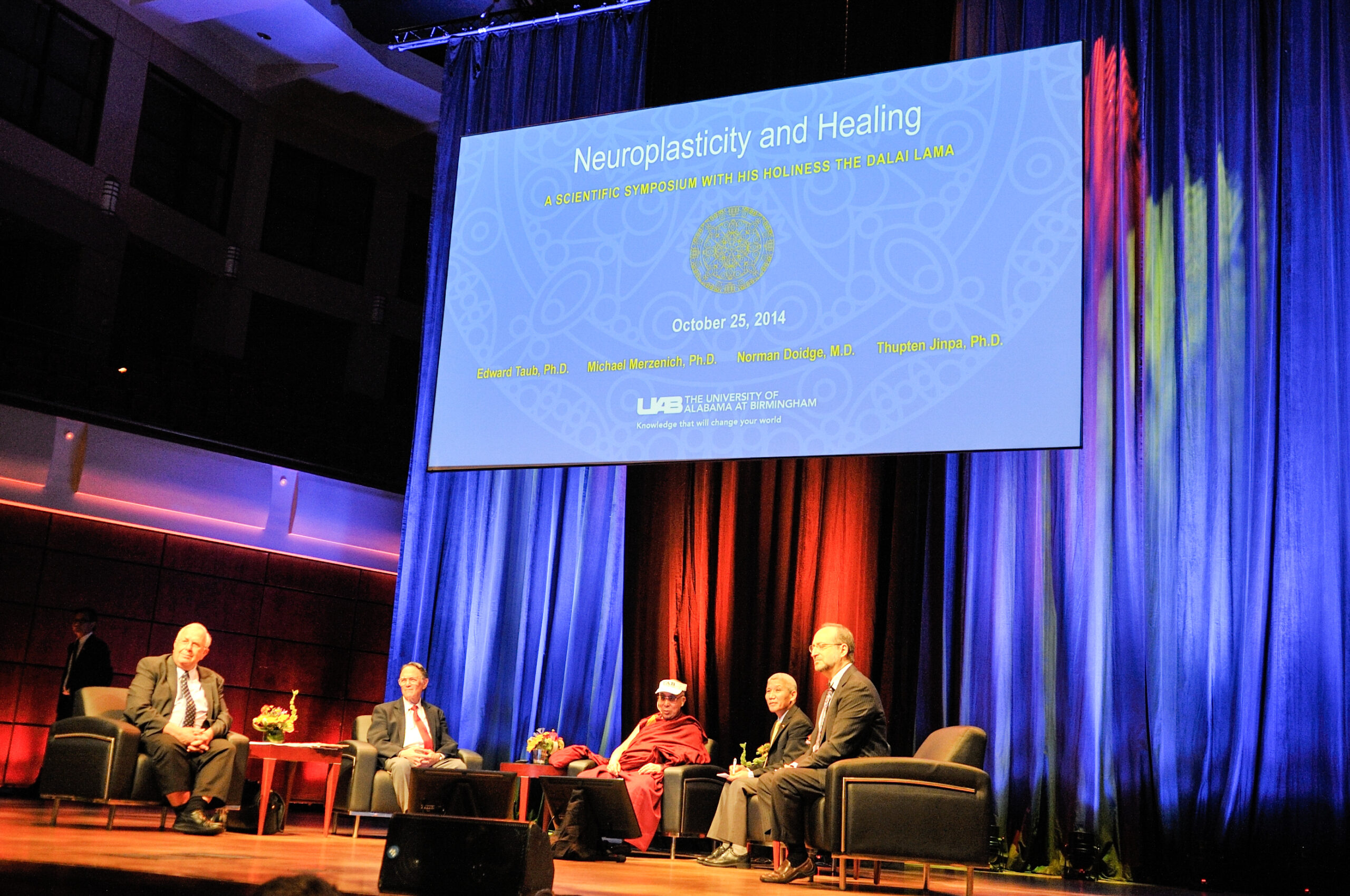
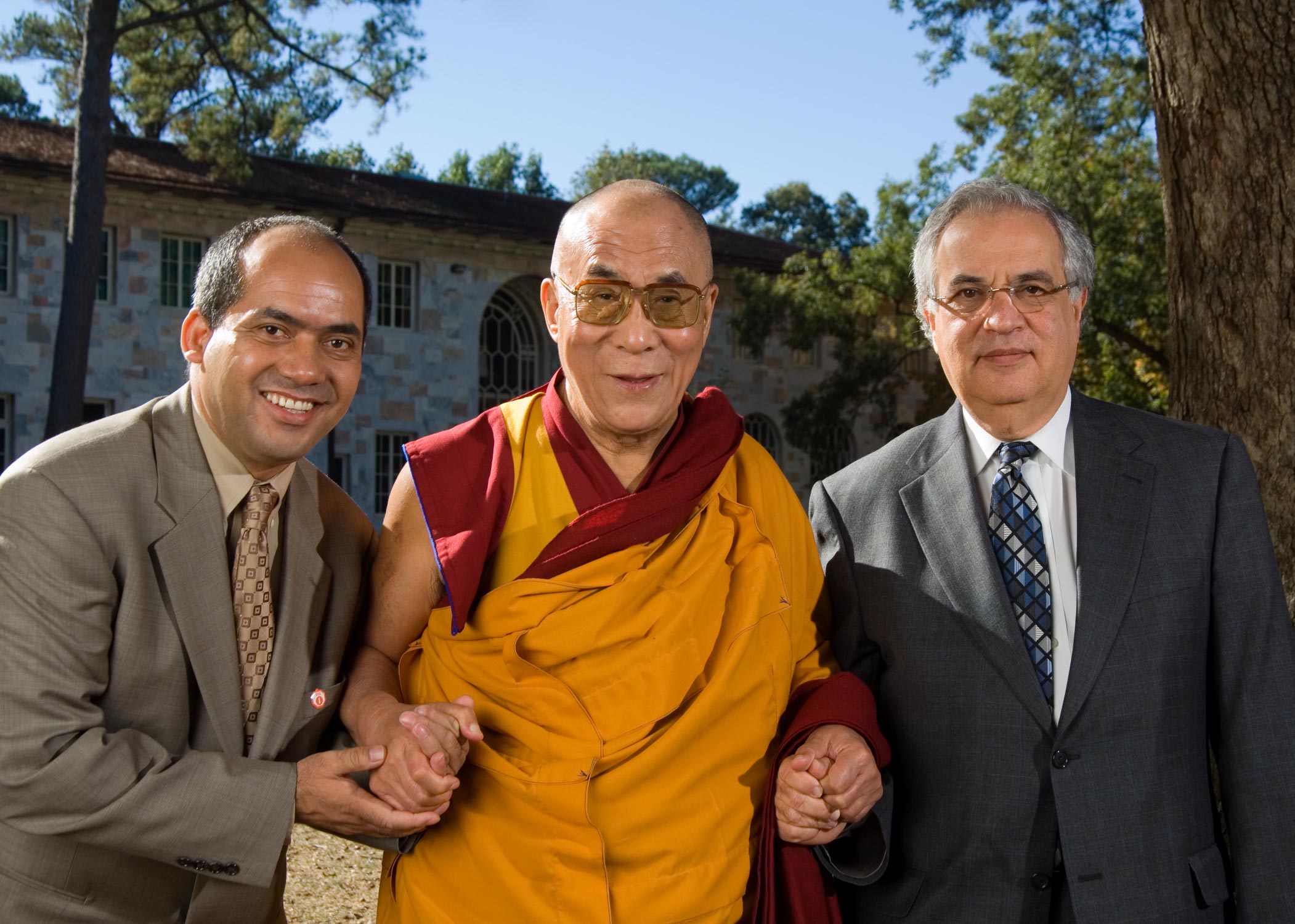
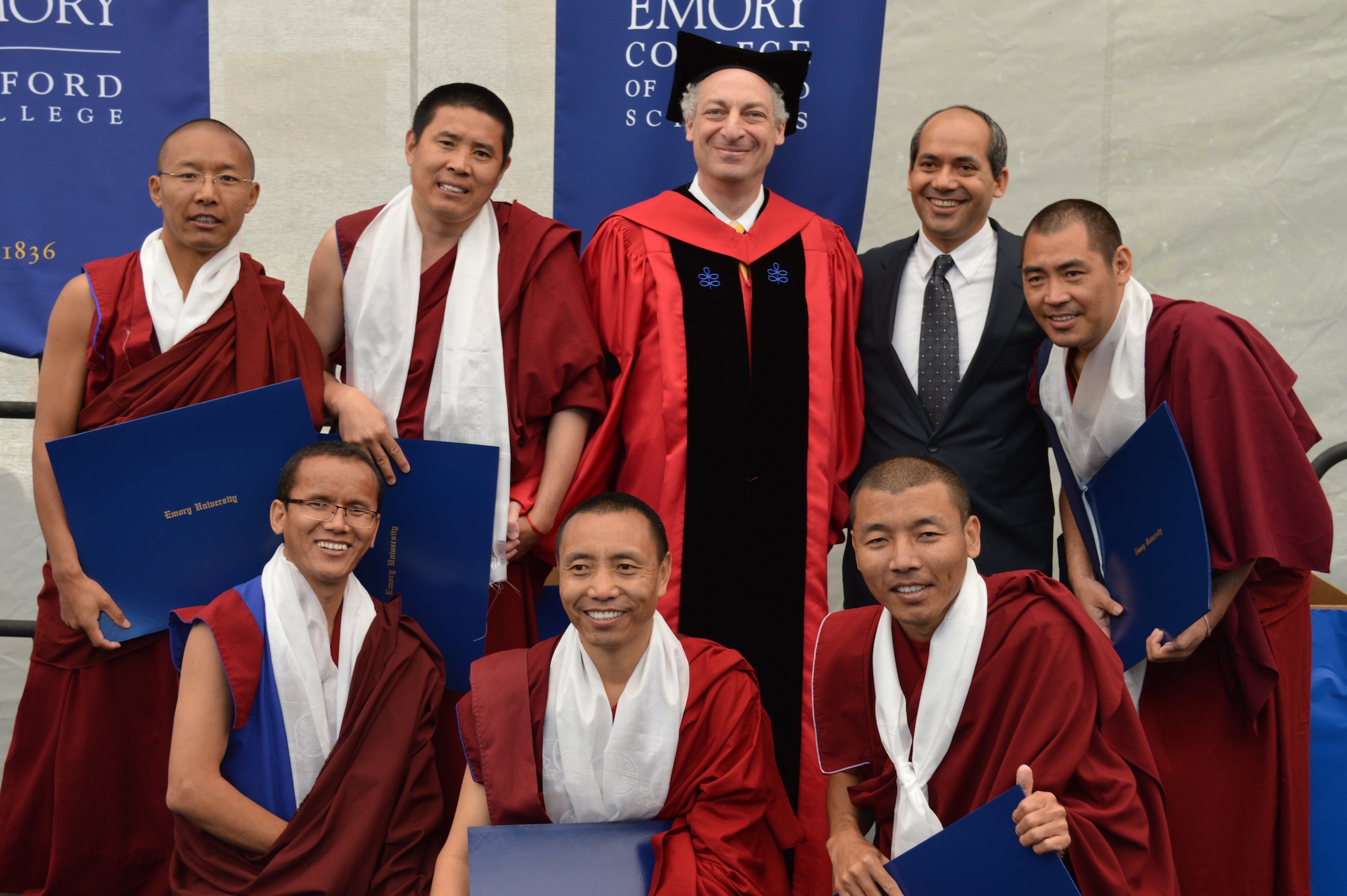
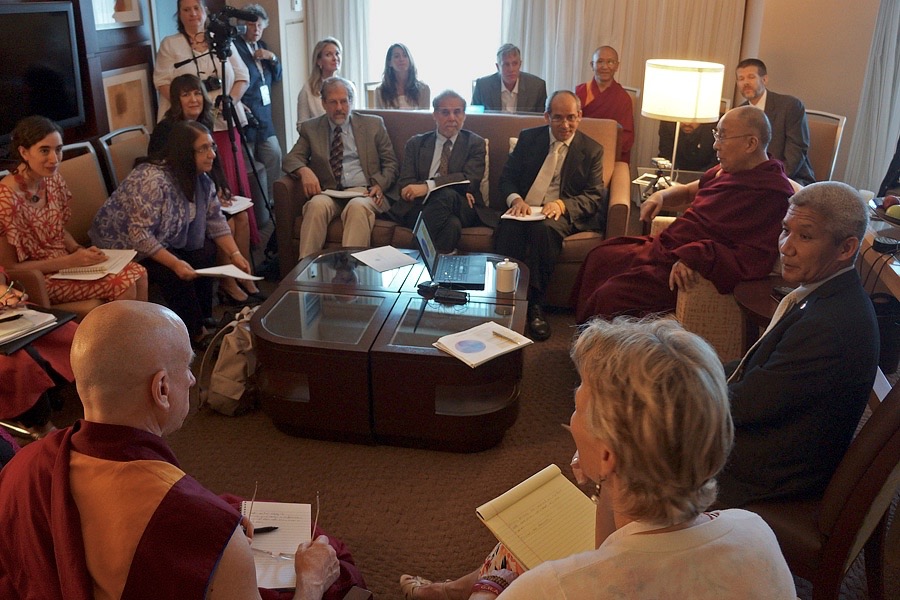
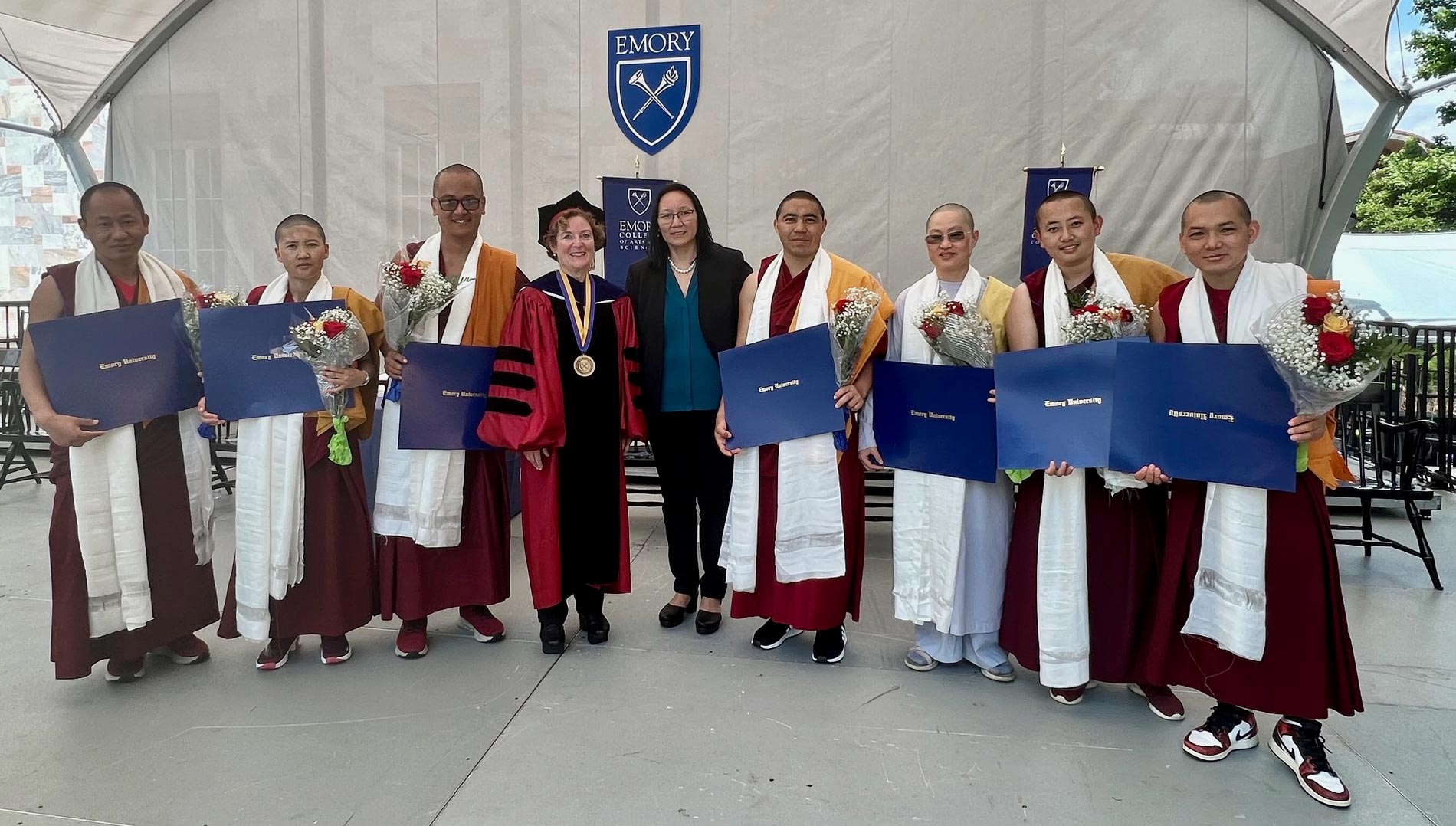
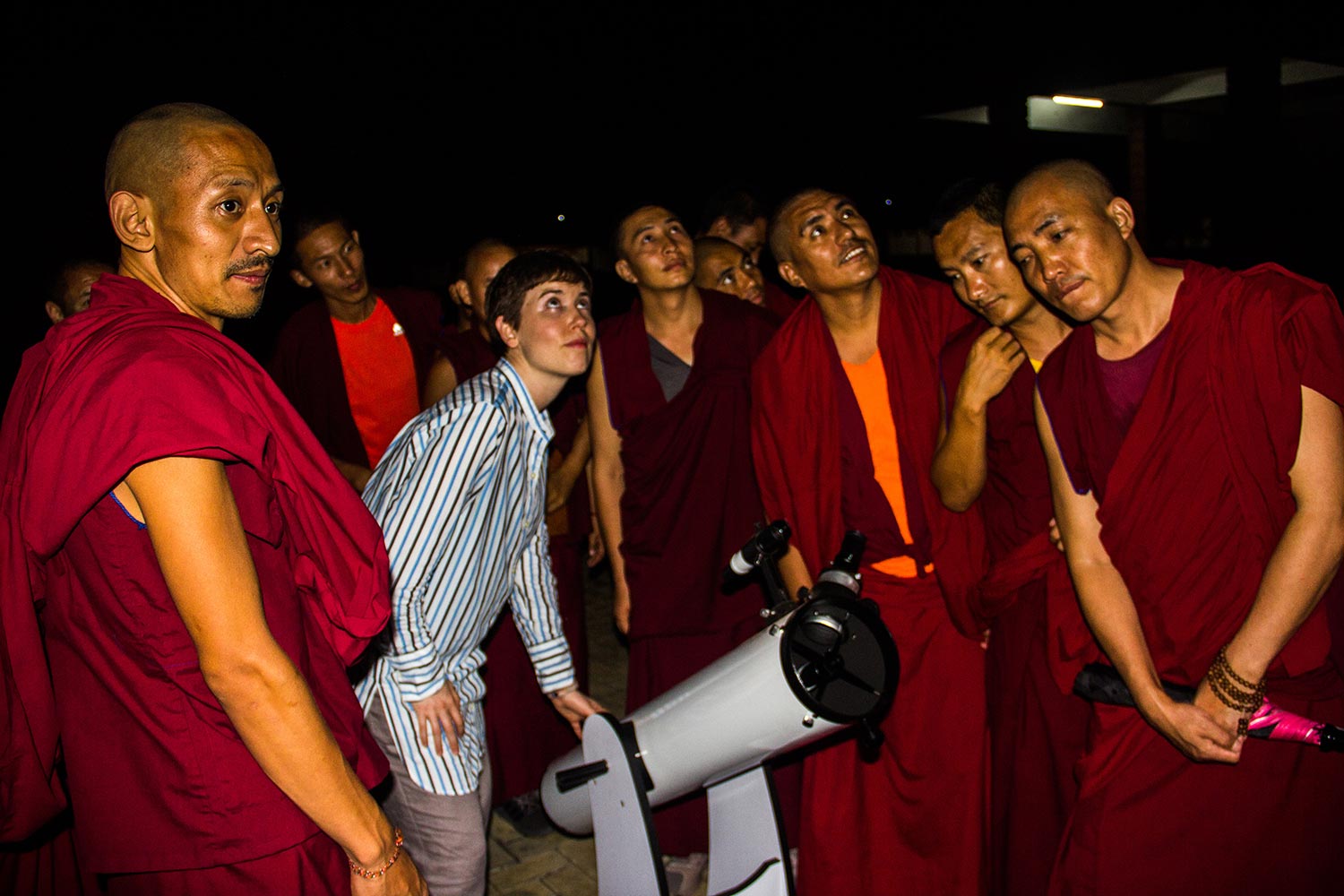
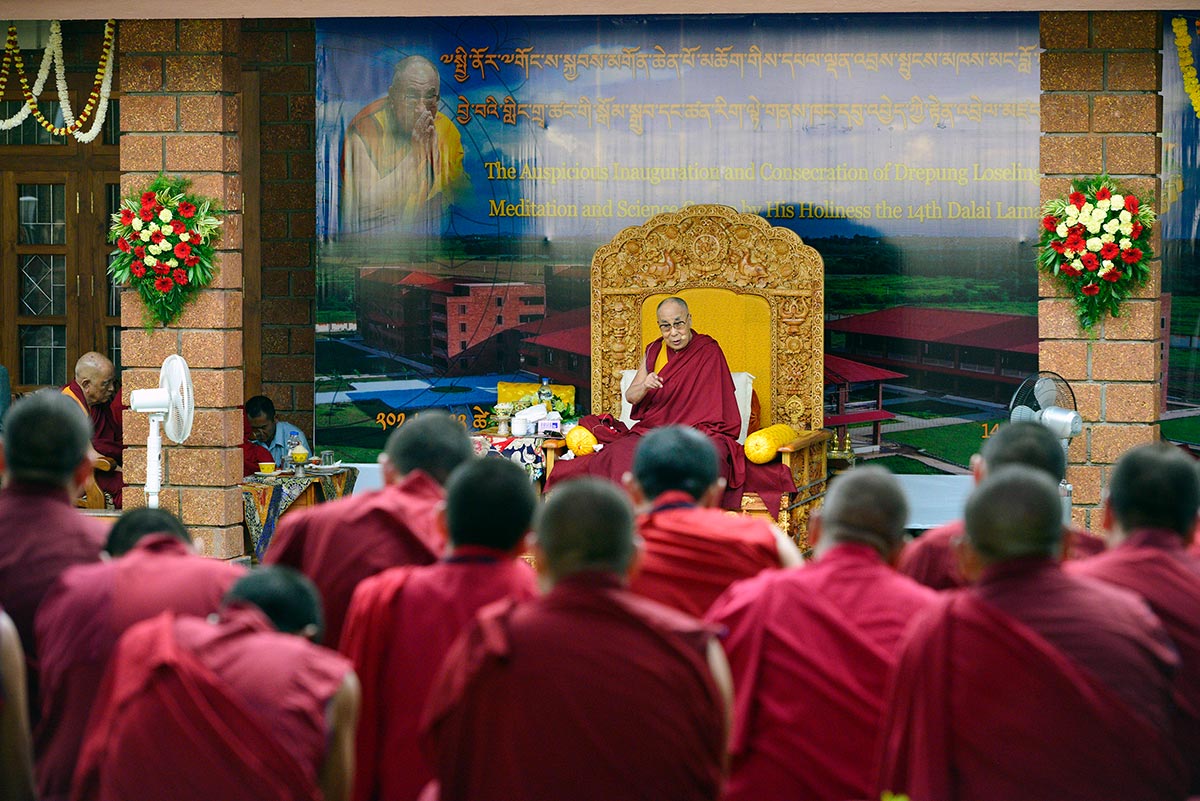
Celebrating a Historic Journey: Emory-Tibet Science Initiative Graduation Event at Drepung Monastery, Mundgod, Karnataka, India, December 14-15, 2019. Courtesy: ETSI
Short video : Inside the Lives of Tibetan Monks at Emory University. Courtesy: ETSI
Inaguration ceremony of the Drepung Monastery Meditation and Science Center, Mundgod, Karnataka, India, 2017. Courtesy: ETSI
